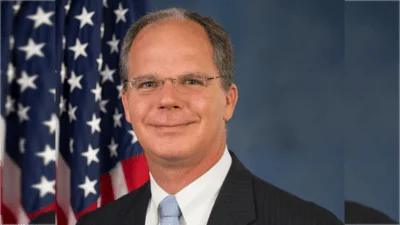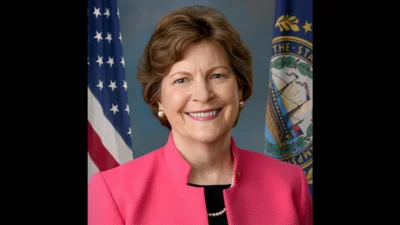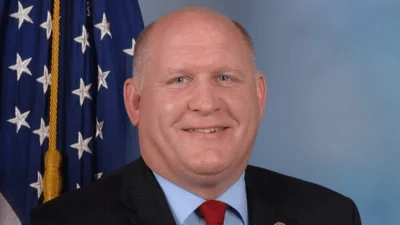The following are opening remarks, as prepared for delivery, from Chair of the House Committee on Transportation and Infrastructure Peter DeFazio (D-OR) and Chair of the Subcommittee on Economic Development, Public Buildings, and Emergency Management Dina Titus (D-NV) during today’s hearing titled, “FEMA Priorities for 2022 and the 2022-2026 Strategic Plan.”
Chair DeFazio:
Thank you, Chair Titus, and thank you to Administrator Criswell for taking the time to be with us today.
There is no better time than now to discuss FEMA’s short-term and long-term plans to meet the challenges posed by an evolving disaster landscape. Natural disasters have become more costly and are having greater impact upon communities across the nation. It is critical that FEMA is equipped with the capacity to respond. To meet this goal, I believe FEMA must expand its workforce and ensure its programs are implemented as effectively, efficiently, and equitably as possible. This mission is critical since the quality of FEMA’s programs significantly impact disaster survivors’ recovery.
Oregon is home to a lot of natural beauty, and unfortunately, this beauty also comes at the price of great risk of natural disasters. My constituents are vulnerable to hazards including flooding, wildfires, earthquakes, tsunamis, and extreme heat just to name a few, and climate change is causing these disasters to impact the state in unprecedented ways. In 2020, wildfires damaged more than 5,000 structures and forced tens of thousands of Oregonians to evacuate. In 2021, record breaking heatwaves in Oregon posed a major health risk to my constituents and tragically caused over 90 deaths.
Unprecedented hazard events have not been confined to Oregon. The record-breaking cost of the 2017 and 2018 disaster seasons and the nation-wide COVID-19 disaster declarations have stretched FEMA to its limit. FEMA’s 2022-2026 Strategic Plan acknowledges this challenge and I look forward to discussing how FEMA intends to expand capacity and adapt its programs to ensure disaster survivors receive the quality assistance they deserve.
I am proud of the work FEMA has achieved under your leadership. You have guided the agency though a pandemic, responded to complex disasters such as Hurricane Ida and the Kentucky tornadoes, while simultaneously implementing reforms that make FEMA’s programs more equitable. It is refreshing that this Administration has made equity a priority and that the Agency continues to seek innovative ways to restructure its programs.
I was especially pleased that the agency will now accept additional forms of documentation to verify the occupancy and ownership requirements of disaster survivors seeking Individual Assistance. This policy change has made Individual Assistance more accessible to underserved communities and homeowners that may not have access to a deed or formal proof of homeownership. However, there is still a lot of work remaining to fully incorporate equity into FEMA’s programs. I fully support these efforts and am open to considering statutory changes.
Reforming FEMA’s response and recovery programs is not enough. Expanding mitigation and resilience efforts must be at the forefront of any conversation regarding the increasing frequency, intensity, and cost of natural disasters. Time and again it has been proven that mitigation is a commonsense, cost-effective way to save lives and property. That’s why I strongly support finding ways to increase funding for mitigation and resilience projects.
I echo Chair Titus’ remarks that FEMA’s mitigation programs must become more accessible to small, rural, and disadvantaged communities. I would also like to see FEMA use its full authorities to place money in the pre-disaster mitigation fund. At present, there’s another $1.7 billion in authority that can be committed to pre-disaster mitigation from the COVID-19 declarations alone.
Thank you again for your time, testimony, and expertise. I look forward to continuing our work together to drive needed reforms inside FEMA and will work to ensure you have the authorities, resources, and direction to achieve your goals and the agency’s mission.
Thank you. I yield back.
Chair Titus:
I’d like to thank Administrator Criswell for joining us to discuss the Federal Emergency Management Agency’s priorities for 2022 and the Agency’s 2022-2026 Strategic plan.
Since our last hearing together in June of 2021, this subcommittee has heard from several panels of witnesses that climate change, the related severe weather events, and development in high-risk areas have changed the emergency management landscape.
Today’s disasters cause more damage, have greater impacts on communities, and require more time to recover. These new challenges to the recovery process make it imperative that FEMA cut the red tape within its assistance programs and deliver resources to individuals and communities in need.
I continue to hear from stakeholders and witnesses that bureaucracy is adding inordinate complexity to the recovery process. As FEMA processes a record number of project worksheets and multitude of Individual Assistance applications, it must be a priority to identify commonsense ways to simplify these assistance pipelines.
Make no mistake, I am impressed by the work the women and men at FEMA have done to rise to the challenge time and time again, especially over the past five years as FEMA’s workforce has been stretched to its limits. Now is the time to provide reinforcements so that FEMA can meet its present mission.
Last month I introduced bipartisan legislation designed to ensure FEMA has the tools it needs to recruit and retain qualified workers for its cadre of disaster reservists. The GAO and the RAND corporation have stated that providing FEMA’s workforce access to adequate protections, training, and benefits will enhance the agency’s capabilities and create better outcomes for disaster survivors and communities.
The unprecedented number of emergency and disaster declarations and capacity challenges burdening FEMA must also inspire us to make proactive investments that will reduce the impact of future disasters and protect our communities. Mitigation is a proven way to save lives and property, and it’s cost effective. I strongly support expanding funding for mitigation projects at the local and individual level.
I hope the House will take a positive step today by passing the bipartisan Resilient America Act, which I led with Chairman DeFazio, Ranking Member Graves, and the Subcommittee’s Ranking Member Mr. Webster. This legislation will boost resources for pre-disaster mitigation including: assistance for communities interested in updating their building codes to reflect the latest hazard resistant designs, and establishing a pilot block grant program so that states interested in assisting residents in the wildland urban interface can enhance defensible space around their property or install fire-resistant building materials to reduce risks.
Mitigation cannot be effective unless it is fairly distributed across all communities. I am concerned with stakeholder feedback that FEMA’s mitigation assistance programs are only reaching the largest and best-resourced communities. The complexity of the hazard mitigation application processes makes it nearly impossible for small, disadvantaged, and rural communities to successfully access these funds.
I appreciated your attention to a letter sent by this subcommittee’s leadership, which posed a series of questions regarding FEMA’s efforts to streamline the hazard mitigation grants process. I hope that implementing reforms to make this process more accessible will continue to be a shared priority for Congress and the agency.
Administrator, I thank you for the work you have done to guide FEMA in a positive direction by acknowledging and addressing the impacts of climate change, prioritizing equity, and investing in mitigation and resilience. I look forward to your testimony and discussing how this committee can work with you to make additional progress on supporting disaster survivors in 2022 and beyond.
Original source can be found here.








